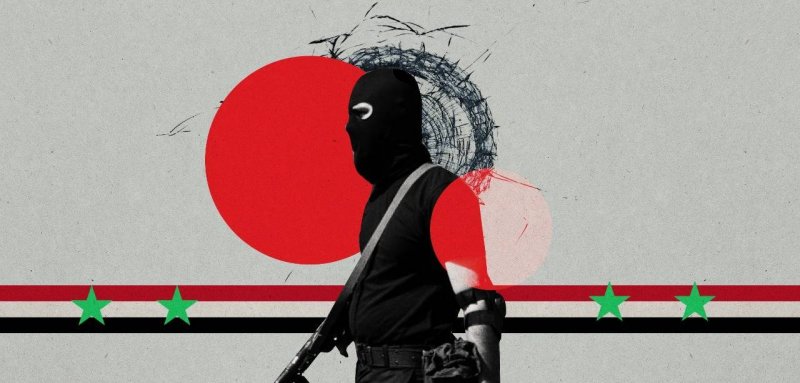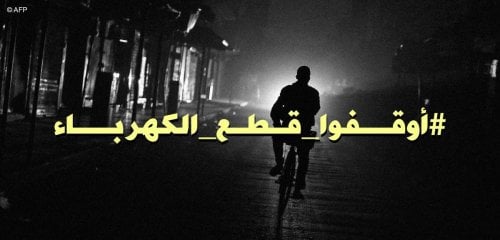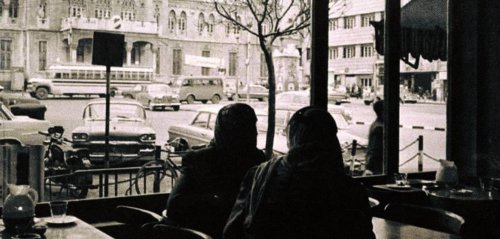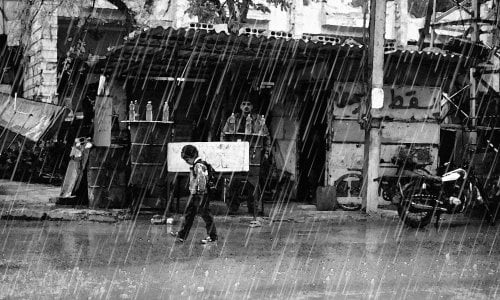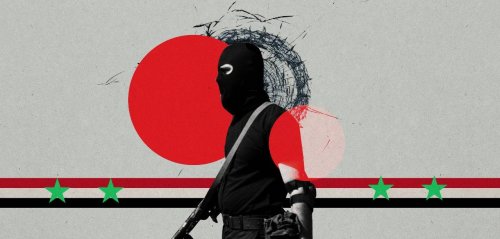Newspapers and websites concerned with the Syrian situation have published two simultaneous news stories that seem unrelated. However, they fit a comment that perfectly describes the state that Syria has reached.
On July 6, the Enab Baladi published a statement by Dr. Raed Abu Harb, Dean of the Faculty of Human Medicine at Damascus University. In it, he said that medical students are at risk of losing the opportunity to train in autopsy and dissection because of a “clear scarcity in the cadavers that are used in training halls”. Abu Harb made it clear in his statements that the Faculty of Medicine at Damascus University receives only one or two corpses annually to be used in practical and hands-on training.
Meanwhile, the Syrian Al-Watan newspaper published a comment from Zaher Hajjo, director of the General Authority of Forensic Medicine (GAFM) where he expressed the authority’s readiness to supply the unidentified and anonymous bodies that they receive in order to train medical students. These two ‘educational’ news came together to present a united image of a country that is in short supply of bodies, at a time when accidents and obituary pages, international reports, photos, and local news on social media networks are witnessing death scattered throughout the streets and people are finding bodies on the streets, as is happening in southern and northwestern Syria.
At a time when the Syrian regime relies on kidnapping, enforced disappearance, and torture, public assassinations appear to be much fewer, despite the long history of political assassinations during both al-Assad eras
In Every Corner and Direction
These assassinations extend over the entire geography of Syria, albeit to varying degrees. At a time when the Syrian regime relies on kidnapping, enforced disappearance, and killing under torture in intelligence basements and prisons everywhere, public assassinations appear to be much fewer in return, despite the long history of political assassinations during both al-Assad eras, father and son.
The same is true in the areas under the control of the Autonomous Administration of North and East Syria (AANES) and the Syrian Democratic Forces (SDF), as assassinations turn up all the time, foreboding a deteriorating security situation in an area that is considered one of the safest areas in Syria, albeit relatively.
In this context, the suffering of the Daraa Governorate — indirectly controlled by the Syrian regime as Russian and Iranian forces share control over different areas in the governorate — manifests in the number of assassinations that take place there, as opposition groups assassinate security figures or people known to have dealt with the regime. These assassinations come in response to operations carried out by regime forces targeting “leaders and members of the former opposition in retaliatory operations as a reply to the security operations that target the regime’s buses, headquarters, and the military and security figures affiliated with it,” according to a report by Enab Baladi news.
In a report published last April, Raseef22 identified activity targeting civilians in Daraa amid a state of uncontrolled security and chaos, as well as grappling for control between two supposed allies — namely Russia, which sponsored the settlement agreement in Daraa three years ago, and Iran, which controls an area of the province that is in the hands of Hezbollah.
Various assassinations have taken place without any party claiming responsibility for these operations, which facilitated the killing of hundreds of civilians during the execution of these operations without any accountability
Bodies on the Streets
In the north, the residents of al-Dweila village in the al-Ajami region — located between the city of Salqin and Kafar Takharim in the Idlib countryside, which is mostly under the control of the Turkish-backed Hay’at Tahrir Al-Sham — found the body of an unidentified young man on the 29th of March. The young man had been shot dead and his body left lying by the side of the road in a mountainous region in the Idlib governorate.
This is not a single, isolated incident in the regions of northwestern Syria. The day before, a charred body of a young man was found in one of the farms surrounding the town of Termanin, north of Idlib. According to press reports, the body was set on fire after its owner was shot dead.
Political Assassinations?
These killings do not only target unidentified and anonymous individuals, but also civilian and military figures active in the region. This can lead us into considering some of them as political assassinations, while armed factions accusing each other without any hard evidence and without prosecuting anyone for any of the operations under a great lack of security and lawlessness paired with Syrian-Russian aerial bombardment that does not abate.
Some of the assassinations seem to have a pattern against the Turkish influence in the region. At the end of April of this year, unknown assailants killed “Abu Yasmin the Kazakhstani” in the village of Abrita near the city of Kafar Takharim. He was a jihadist militant that was arrested by Hay’at Tahrir Al-Sham for a short period before his death, about six months ago. Kazakhstani had previously fought alongside the militias of the “Turkistan Islamic Party in Syria” and “Guardians of Religion Organization”.
Last May, unknown assailants also assassinated Ibrahim al-Hamed al-Ansari, a leader within the 123rd Brigade in the “Ahrar Al-Sharqiya” faction, which is a part of the Turkish-backed “Syrian National Army (SNA)”.
But the assassinations are also directed against people that are not affiliated with Turkey, as unidentified gunmen attempted to assassinate dentist “Mohammad Al-Khatib”, an activist and medical volunteer in refugee camps for the internally displaced. The assassination attempt took place last December in the center of the city of Idlib, where Hay’at Tahrir Al-Sham (HTS) members are heavily deployed, and the perpetrators were not arrested.
At a time when Hay’at Tahrir Al-Sham (HTS) accuses “sleeper cells that belong to ISIS” of being behind these operations, those close to the ‘Turkistan Islamic Party in Syria’ have accused HTS themselves of carrying out these assassinations. Meanwhile, a third party believes that these operations were carried out by agents of the Air Force Intelligence branch that belongs to the Syrian regime and is heavily deployed in areas of the Idlib countryside.
Assassinations, a Daily Routine
Since the start of the infighting between armed factions and militias in northwestern Syria in 2017, and later after Hay’at Tahrir Al-Sham took control of most of the areas starting 2018, the region has witnessed various assassinations, and no party has claimed responsibility for these operations. This led to the killing of hundreds of civilians during the implementation of these operations, in conjunction with growing indicators of military deterioration in the areas controlled by the armed opposition and jihadist factions due to direct Russian and Turkish intervention, and “the redefinition of the political position on the Syrian scene for most international and regional actors”.
Between late April and late August of 2018, the Syrian Observatory for Human Rights (SOHR) documented the killing of 270 people in northwestern Syria, including 55 civilians, in various assassinations — most of which no one claimed responsibility for.
The Syrian Observatory for Human Rights also mentioned in a report it published last March that the number of people who died in the countrysides of Idlib, Aleppo, Hama, and Latakia since the 26th of April of 2018 — “the date that marks the beginning of the escalation of insecurity and lawlessness” — has reached 755, including a Turkistan fighter and the family of an Uzbek fighter, as well as a deputy in the Justice Ministry of the Syrian Salvation Government. It also contains 228 civilians — including 24 children and 23 women — and 443 Syrian fighters belonging to different militant factions, in addition to 80 fighters of different nationalities (Somali, Uzbek, Asian, Caucasian, Gulf, Jordanian and Turkish). All these were killed during the detonation of car bombs and explosive devices, shootings, kidnappings, and killings, that lead to the dumping of the bodies in isolated areas.
During the first half of last year, the “Strategic Thinking Group” documented 96 assassination operations that left 271 victims in their wake. The group also noted that 39 operations were carried out by explosive devices, while shootings and gunfire were used in 45 operations, compared to four operations that were carried out by drones, six operations carried out through the use of landmines, and two operations by hand grenades.
In a special report it had published, the “Omran Center for Strategic Studies” also documented assassinations in areas controlled by opposition military factions in northern Syria during the second half of 2020, saying that “the nature of the operations ranged between selective operations targeting specific people, and random ones targeting military groups amidst gatherings and crowds of civilians, while others targeted purely civilian gatherings, such as public markets.”
The same report identified 74 operations that left 471 victims, 47 of which were carried out by explosive devices, while gunfire was used in 24 operations, while three attempts were carried out through the use of hand grenades.
Raseef22 is a not for profit entity. Our focus is on quality journalism. Every contribution to the NasRaseef membership goes directly towards journalism production. We stand independent, not accepting corporate sponsorships, sponsored content or political funding.
Support our mission to keep Raseef22 available to all readers by clicking here!
Interested in writing with us? Check our pitch process here!
